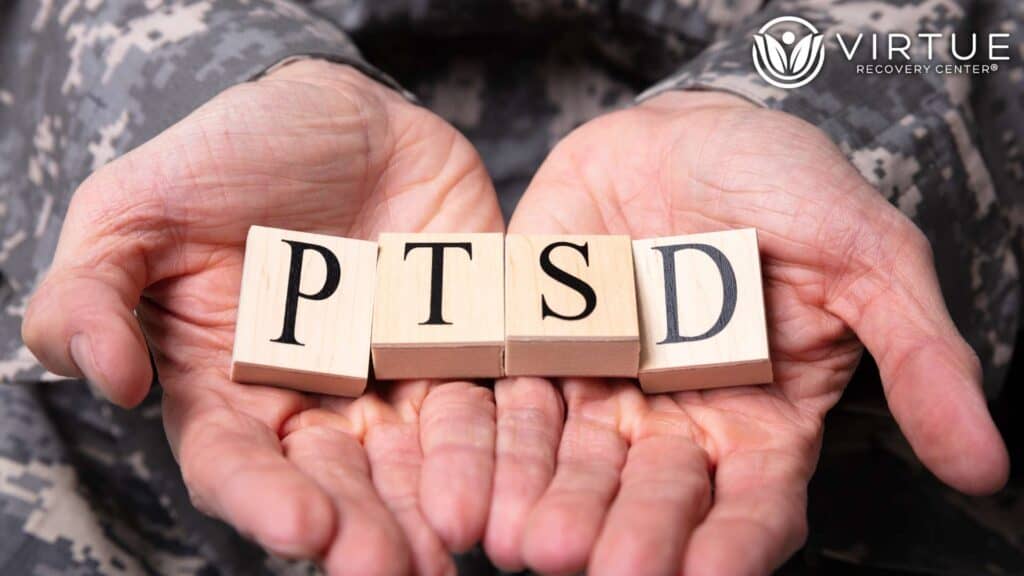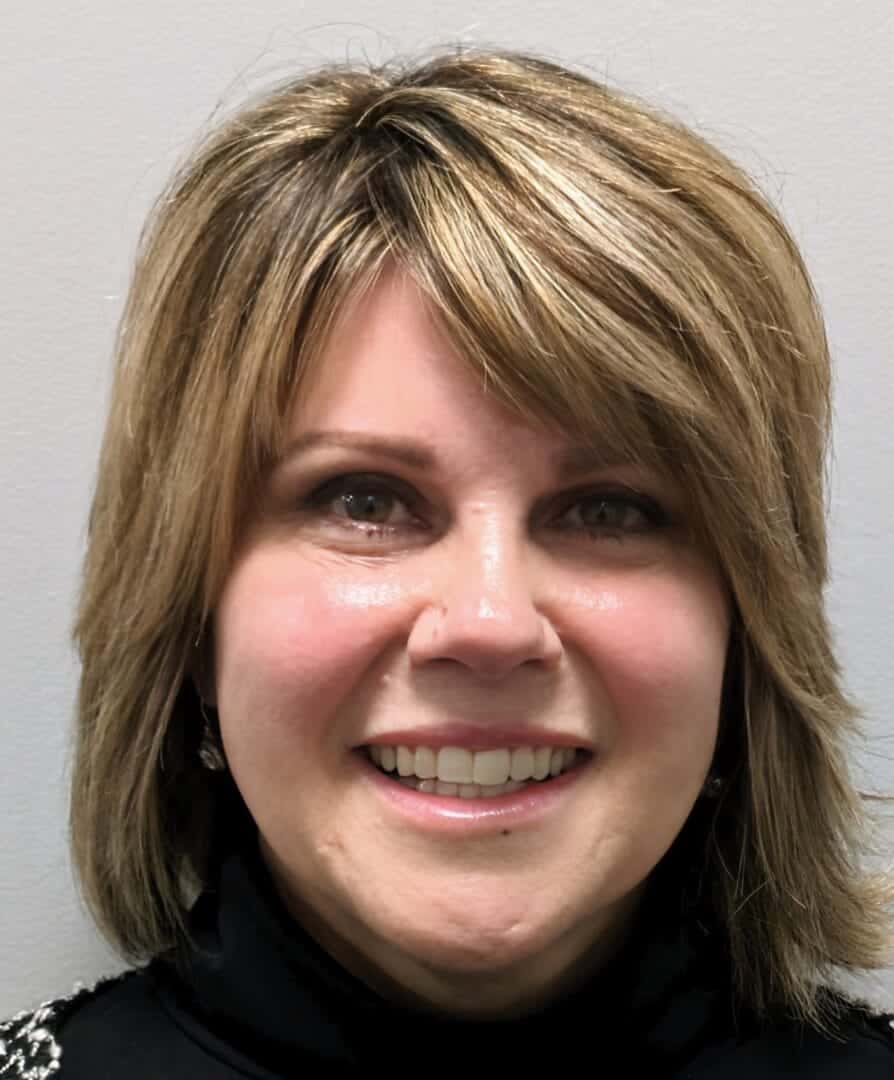Key Takeaways
- PTSD often co-occurs with substance use disorders, creating a dual diagnosis.
- People with PTSD may turn to drugs or alcohol as a form of self-medication.
- Effective treatment requires addressing both PTSD and substance use simultaneously.
- Integrated programs with therapy and medication can improve long-term recovery.
- Specialized dual-diagnosis treatment centers offer comprehensive care.
Introduction to Co-Occurring PTSD and Substance Use
Trauma has a profound impact on mental health, often leaving invisible scars that persist for years. For many individuals, traumatic experiences lead to Post-Traumatic Stress Disorder (PTSD), a condition marked by overwhelming symptoms such as flashbacks, heightened anxiety, and emotional numbness.
Unfortunately, many people with PTSD also struggle with substance use disorders. This co-occurrence, known as dual diagnosis, poses unique challenges for treatment. Understanding the link between PTSD and addiction is critical to developing effective care plans that address both conditions.
What is PTSD and Its Symptoms?
Post-Traumatic Stress Disorder (PTSD) occurs when someone has difficulty recovering from a traumatic experience. The event could involve combat, abuse, natural disasters, or other distressing situations.
PTSD symptoms can vary but often include:
- Flashbacks or Nightmares: Reliving the traumatic event repeatedly.
- Avoidance: Steering precise of places, people, or activities that remind them of the trauma.
- Hypervigilance: Constantly feeling on edge or easily startled.
- Mood Changes: Experiencing depression, anger, or feelings of guilt.
Without treatment, these symptoms may worsen over time and interfere with daily life. For many, the distress of PTSD becomes unbearable, leading them to seek relief through substances.
How Trauma and PTSD Contribute to Addiction
The link between trauma and addiction is well-documented. People with PTSD often turn to alcohol or drugs to dull their emotional pain and alleviate symptoms like anxiety or insomnia.
Using substances may provide temporary relief, but it comes with a cost. Over time, the brain adapts to these substances, leading to dependence and addiction. This cycle of self-medication makes recovery even more difficult.
Studies show that people with PTSD are more likely to develop substance use disorders than those without PTSD. Veterans, first responders, and individuals who have experienced abuse are especially at risk.
Understanding Dual Diagnosis: Co-Occurring PTSD and Addiction
A dual diagnosis occurs when someone has both a mental health condition, like PTSD, and a substance use disorder. These conditions often feed into each other, making both harder to treat.
For example:
- PTSD symptoms like insomnia or anxiety may drive substance use.
- Substance use can worsen PTSD symptoms, creating a vicious cycle.
Without addressing both conditions, treatment outcomes may fall short. That’s why specialized programs for dual diagnosis are essential—they provide comprehensive care that tackles both PTSD and addiction simultaneously.
Effective Treatments for PTSD and Substance Use Disorders
Treating PTSD and addiction together requires a thoughtful, integrated approach.
Therapies That Work
- Cognitive Behavioral Therapy (CBT):
CBT helps patients identify and change negative thought patterns that contribute to their struggles. - Trauma-Focused Cognitive Behavioral Therapy (TF-CBT):
A specialized form of CBT designed to address trauma directly while managing its emotional impact. - Eye Movement Desensitization and Reprocessing (EMDR):
EMDR uses guided eye movements to help individuals process traumatic memories. - Mindfulness-Based Stress Reduction (MBSR):
This therapy emphasizes staying present in the moment, reducing stress and anxiety.
Medication-Assisted Treatments (MAT)
For substance use disorders, medications like buprenorphine or naltrexone can help manage cravings and withdrawal symptoms.
For PTSD, antidepressants or anti-anxiety medications may be prescribed to stabilize mood and reduce symptoms.
The Benefits of Dual-Diagnosis Treatment Centers
Specialized treatment centers, like Virtue Recovery Chandler, provide tailored programs for people with PTSD and addiction. These facilities offer:
- Comprehensive Assessments: Ensuring both conditions are correctly diagnosed.
- Individualized Treatment Plans: Meeting the unique needs of each patient.
- Supportive Environments: Creating safe spaces for recovery and healing.
- Holistic Therapies: Addressing mental, emotional, and physical well-being.
Dual-diagnosis treatment programs significantly improve long-term recovery outcomes, giving individuals the tools to rebuild their lives.
Conclusion to Co-Occurring PTSD and SUD
PTSD and addiction are deeply connected, with trauma often driving substance use. Addressing these challenges requires a dual-diagnosis approach that treats both conditions together. With the right support, recovery is possible. This integrated treatment can involve therapy, medication, and support groups that cater to both PTSD and addiction. By focusing on healing the underlying trauma while simultaneously developing longterm sobriety strategies, individuals can build a foundation for sustained recovery. It is essential to create a personalized plan that acknowledges the unique experiences and needs of each person on their journey to wellness.
If you or a loved one is struggling with PTSD and addiction, don’t wait. Contact Virtue Recovery Chandler at 866-338-5779 to take the first step toward healing and a brighter future.
FAQs About PTSD and SUD
What is PTSD?
PTSD stands for Post-Traumatic Stress Disorder. It is a mental health condition that develops after experiencing or witnessing a traumatic event.
How is PTSD linked to addiction?
People with PTSD may use alcohol or drugs to cope with their symptoms, which can lead to substance use disorders.
What is a dual diagnosis?
Dual diagnosis refers to having both a mental health disorder, like PTSD, and a substance use disorder at the same time.
How is dual diagnosis treated?
Dual diagnosis is treated through integrated programs that address both conditions simultaneously. These programs often include therapy, medication, and holistic support.
Why is integrated treatment important for PTSD and addiction?
Integrated treatment ensures that both PTSD and addiction are treated together, improving recovery outcomes and preventing relapse.
What are the symptoms of PTSD (post-traumatic stress disorder)?
PTSD symptoms include intrusive memories, nightmares, flashbacks, avoidance of triggers, heightened anxiety, irritability, emotional numbness, and difficulty concentrating or sleeping.
How does trauma and substance abuse go together?
Trauma often leads to substance abuse as individuals may use drugs or alcohol to self-medicate and cope with overwhelming emotions or flashbacks, creating a cycle of dependency and mental health challenges.
Where can someone get treatment for PTSD and addiction?
Treatment for PTSD and addiction is available at specialized dual diagnosis rehab centers, such as Virtue Recovery Center, which address both conditions simultaneously through therapy and medical care.
Where can someone find a good addiction treatment program for PTSD and substance abuse?
Good addiction treatment programs for PTSD and substance abuse can be found at facilities offering dual diagnosis care, trauma-informed therapy, and evidence-based treatments like CBT and EMDR.
What treatment options are available for dual diagnosis treatment?
Treatment options include therapy (CBT, DBT, EMDR), medication-assisted treatment (MAT), group therapy, individual counseling, and holistic approaches like mindfulness or yoga to address both mental health and substance use disorders.
Do Veterans with PTSD have a higher chance of needing substance abuse treatment?
Yes, Veterans with PTSD are at a higher risk of substance abuse as they may use drugs or alcohol to cope with trauma-related symptoms, increasing the need for specialized dual diagnosis care.
What are the PTSD symptoms?
PTSD symptoms include recurring intrusive thoughts or flashbacks, avoidance of trauma-related situations, hypervigilance, irritability, emotional detachment, and sleep disturbances.
Resources
https://nida.nih.gov/research-topics/trauma-and-stress
https://www.sciencedirect.com/science/article/abs/pii/S0306460321000745








